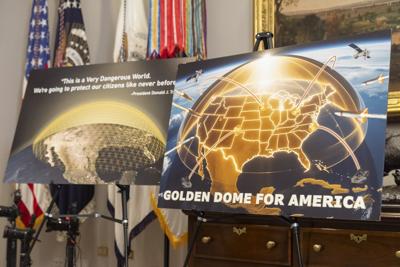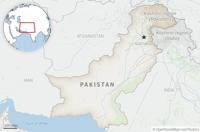JERUSALEM (AP) — U.S. President Donald Trump's plan for a “Golden Dome” to protect the United States from long-range missiles was at least partly inspired by Israel's multitiered missile defenses.
Trump announced the $175 billion concept in the Oval Office on Tuesday, saying it would put U.S. weapons in space for the first time and be would be “fully operational” by the end of his term in early 2029, though a U.S. official familiar with the program said it could take longer.
Israel's multilayered defenses, often collectively referred to as the “Iron Dome," have played a key role in defending it from rocket and missile fire from Iran and allied militant groups in .
The sophisticated system, developed over decades with considerable U.S. support, is capable of detecting incoming fire and deploying only if the projectile is headed toward a population center or sensitive military or civilian infrastructure. Israeli leaders say the system isn't 100% guaranteed, but credit it with preventing serious damage and countless casualties.
Here’s a closer look at Israel’s multilayered air-defense system:
The Arrow
This system developed with the U.S. is designed to intercept long-range missiles. The Arrow, which operates outside the atmosphere, has been used to intercept long-range missiles launched by and by Iran itself during last year.
David’s Sling
Also developed with the U.S., David’s Sling is meant to intercept medium-range missiles, such as those possessed by Lebanon's Hezbollah militant group. It was deployed on multiple occasions throughout the war with Hezbollah, which last year.
Iron Dome
This system, developed by Israel with U.S. backing, specializes in shooting down short-range rockets. It since it was activated early last decade — including volleys launched by Hamas and Hezbollah. Israel says it has a success rate of over 90%.
Iron Beam
Israel is developing a new system to intercept incoming threats with laser technology. Israel has said this system will be a game changer because it would be much cheaper to operate than existing systems. According to Israeli media reports, the cost of a single Iron Dome interception is about $50,000, while the other systems can run more than $2 million per missile. Iron Beam interceptions, by contrast, , according to Israeli officials — but the system is not yet operational.
___
Follow AP’s war coverage at







































